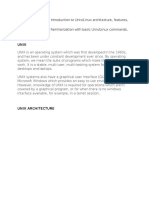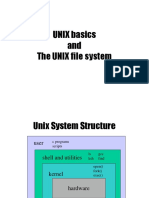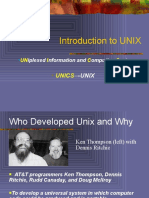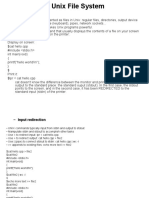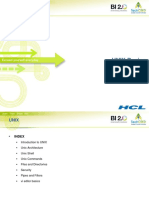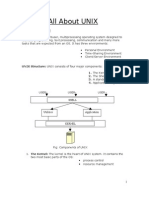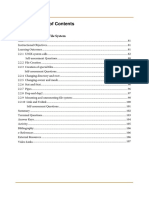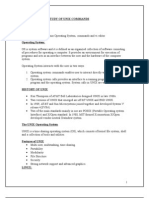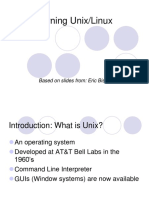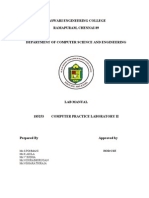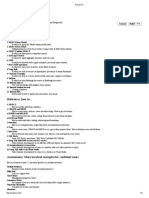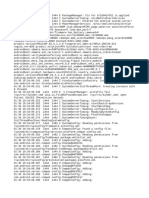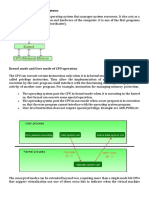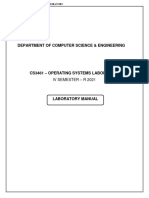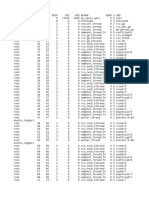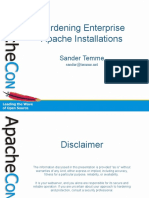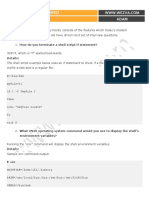0% found this document useful (0 votes)
26 views36 pagesIntro UNIX
The document provides an overview of UNIX system programming, focusing on the user interface through shells, various shell types, and the importance of login scripts. It explains file handling, including file I/O system calls, file permissions, and the UNIX file hierarchy. Additionally, it covers the basics of system calls, including reading and writing files, and using higher-level I/O functions.
Uploaded by
shresthCopyright
© © All Rights Reserved
We take content rights seriously. If you suspect this is your content, claim it here.
Available Formats
Download as PDF, TXT or read online on Scribd
0% found this document useful (0 votes)
26 views36 pagesIntro UNIX
The document provides an overview of UNIX system programming, focusing on the user interface through shells, various shell types, and the importance of login scripts. It explains file handling, including file I/O system calls, file permissions, and the UNIX file hierarchy. Additionally, it covers the basics of system calls, including reading and writing files, and using higher-level I/O functions.
Uploaded by
shresthCopyright
© © All Rights Reserved
We take content rights seriously. If you suspect this is your content, claim it here.
Available Formats
Download as PDF, TXT or read online on Scribd
/ 36



